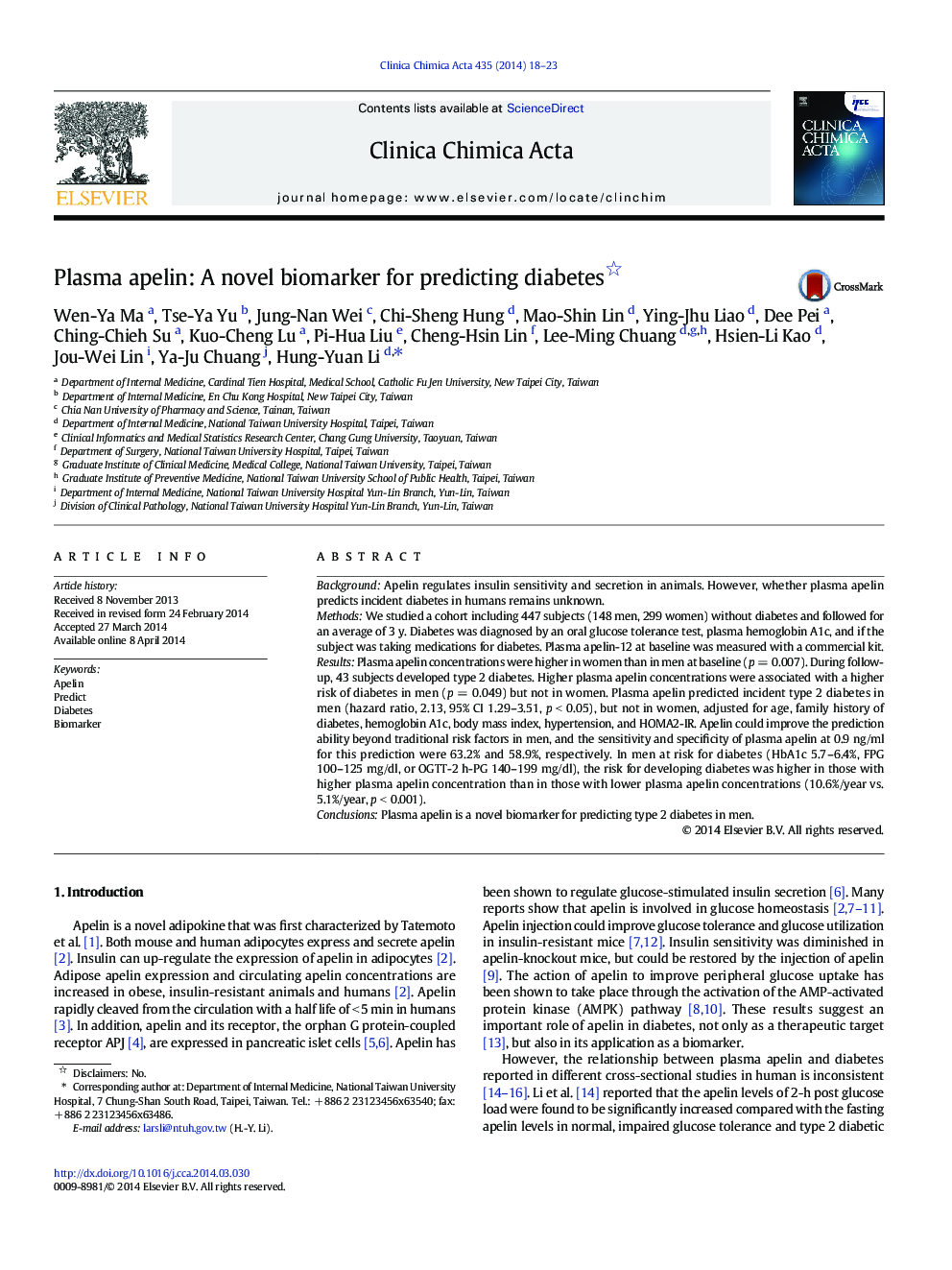| Article ID | Journal | Published Year | Pages | File Type |
|---|---|---|---|---|
| 1965493 | Clinica Chimica Acta | 2014 | 6 Pages |
•We evaluated the association of plasma apelin and future development of diabetes.•Plasma apelin can independently predict incident diabetes in men, but not in women.•Plasma apelin can improve the prediction ability beyond traditional risk factors.•Plasma apelin is a novel biomarker for predicting incident diabetes in men.
BackgroundApelin regulates insulin sensitivity and secretion in animals. However, whether plasma apelin predicts incident diabetes in humans remains unknown.MethodsWe studied a cohort including 447 subjects (148 men, 299 women) without diabetes and followed for an average of 3 y. Diabetes was diagnosed by an oral glucose tolerance test, plasma hemoglobin A1c, and if the subject was taking medications for diabetes. Plasma apelin-12 at baseline was measured with a commercial kit.ResultsPlasma apelin concentrations were higher in women than in men at baseline (p = 0.007). During follow-up, 43 subjects developed type 2 diabetes. Higher plasma apelin concentrations were associated with a higher risk of diabetes in men (p = 0.049) but not in women. Plasma apelin predicted incident type 2 diabetes in men (hazard ratio, 2.13, 95% CI 1.29–3.51, p < 0.05), but not in women, adjusted for age, family history of diabetes, hemoglobin A1c, body mass index, hypertension, and HOMA2-IR. Apelin could improve the prediction ability beyond traditional risk factors in men, and the sensitivity and specificity of plasma apelin at 0.9 ng/ml for this prediction were 63.2% and 58.9%, respectively. In men at risk for diabetes (HbA1c 5.7–6.4%, FPG 100–125 mg/dl, or OGTT-2 h-PG 140–199 mg/dl), the risk for developing diabetes was higher in those with higher plasma apelin concentration than in those with lower plasma apelin concentrations (10.6%/year vs. 5.1%/year, p < 0.001).ConclusionsPlasma apelin is a novel biomarker for predicting type 2 diabetes in men.
